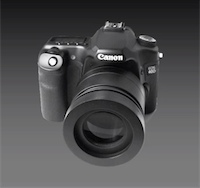Researchers turn bad glass good with new lens sharpening technique
posted Monday, September 30, 2013 at 3:32 PM EDT

Getting a lens that's extremely sharp generally means you're going to be dealing with a large, expensive, and heavy piece of gear strapped to the front of your camera. But what if you could do away with much of the internal optics, and instead turn to computation for getting your image as sharp as possible? A paper set to be presented at SIGGRAPH shows exactly that, that by correctly calibrating for even a poor lens, detail can be matched for a much better one.
The way it works is that a camera is set up with a very simple, and arguably low quality lens. Then a photograph is taken of a special test grid. Next, an algorithm is calibrated from the distortions in the chart so that that lens's particular problems are accounted for, and can be accurately dealt with. Unlike an unsharp mask or the like, this is an attempt to recreate what the original scene would have looked like based on an individual lens profile.
There's an excellent discussion of the technical side of this on Reddit, if you want to delve more into this. But it could potentially be a way of taking low quality lenses, and notably improving them, resulting in much smaller lens construction. And you can bet that smartphone makers and the like are interested in that. Conversely, seeing as Lightroom and its ilk have lens specific distortion correction, would it be possible to generate something like this for a commercially available lens? Maybe to make a mediocre kit lens all that much better.
For more of a look at how well this system would work, there are before and afters on the project's site. There's also a video with some background on the system below.
(Via Reddit)